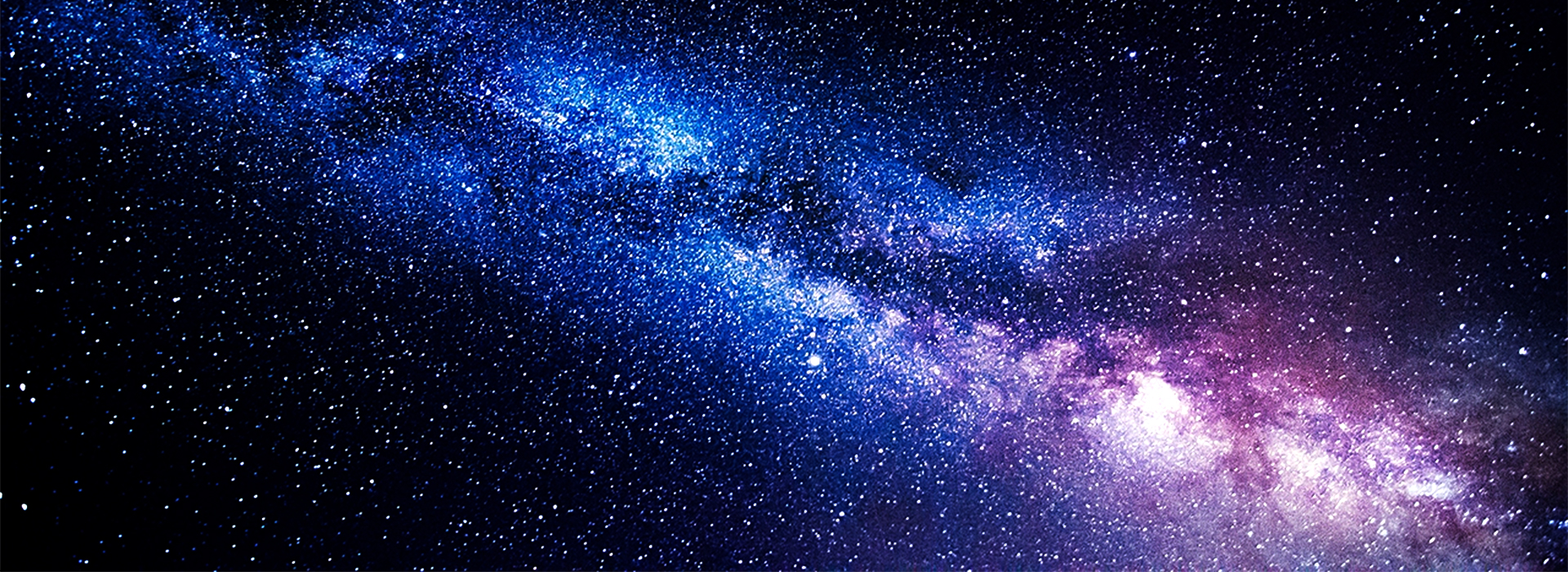Dark Matter group at the Institute for Astroparticle Physics (IAP)
The Dark Matter Group is conducting research at the Karlsruhe Institute of Technology (KIT) to unravel the nature of "dark matter", one of the greatest mysteries in the Universe. Although Dark Matter manifests itself in many astrophysical and cosmological observations, its particle nature remains unknown so far. Due to the required properties as Dark Matter particle, none of the elementary particles constituting the "Standard Model of Particle Physics" (SM) can make up Dark Matter. Thus, physics beyond the SM is needed. There are many theoretical extensions of the SM giving rise to DM candidates such as the axion or a sterile neutrino. Another model called supersymmetry could naturally contain a lightest supersymmetric particle (LSP) as DM candidate being the so-called weakly interacting massive particle (WIMP).
A promising method for the discovery of WIMPs is the search for scattering processes of WIMPs from the galactic halo scattering off an atomic nucleus of known matter. Such scattering processes are expected to be extremely rare leaving only tiny signatures. To search for such signals requires highly sensitive detectors as much as possible shielded against ambient and cosmic-induced background. There are searches ongoing worldwide with sophisticated technologies and ever more sensitive measuring methods.
We are conducting intensive research and development (R&D) for the current search for dark matter as well as for the next generation of experiments. The Dark Matter Group at the IAP of KIT is a member of the XENON Collaboration (since 2019) and participates in the construction and operation of the XENONnT experiment. Since 2018, we are involved in the development of the follow-up experiment DARWIN. Since 2022 we also contribute to the design of the DELight experiment and perform pre-studies.
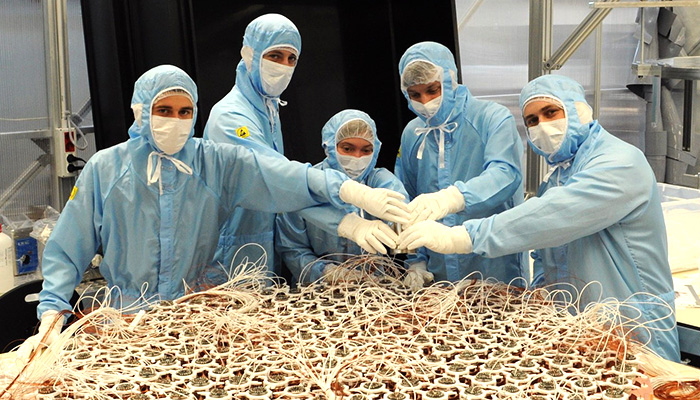
The XENON collaboration comprises 163 scientists from 28 institutions across 11 countries. Five German institutions are significantly involved: The Max Planck Institute for Nuclear Physics in Heidelberg, the Universities of Münster, Mainz and Freiburg as well as the Karlsruhe Institute of Technology.
The XENON1T experiment running from 2016 to 2018 has been upgraded to its next phase, XENONnT, with an active xenon mass three times larger and a background that is expected to be lower by a factor 6, thus improving even further the world-record sensitivity of XENON1T. XENONnT has been commissioned in 2020 and is taking data since 2021. The KIT group has been involved in the setup of XENONnT and is now contributing to the data analysis.
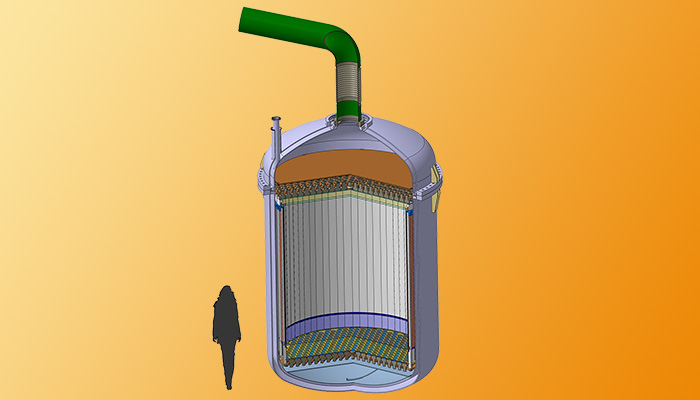
DARk matter WImp search with liquid xenoN (DARWIN) is a future experiment for the direct detection of dark matter based on a multi-ton liquid xenon time projection chamber. DARWIN is a collaborative project of 29 institutions from 12 countries building on the highly successful dual-phase xenon technology developed and explored in the XENON experiment series (XENON10, XENON100, XENON1T). KIT is a founding member of the DARWIN collaboration. We contribute e.g. to the electrostatic design of the TPC, on the suppression of background and on sensitivity studies for Dark Matter and other searches for physics beyond the Standard Model.
More about DARWIN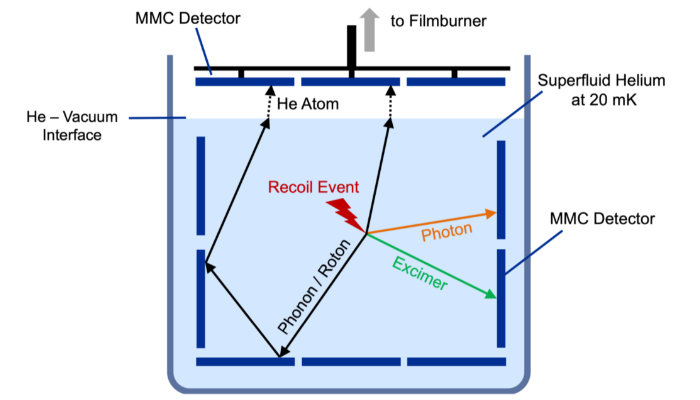
The first phase of the DELight experiment will consist of a 10L volume of superfluid helium instrumented by Magnetic MicroCalorimeter (MMC) detectors. A schematic of the experimental setup is shown here. Above the superfluid helium volume is vacuum. Quasiparticles from particle interactions can liberate helium atoms at the helium surface in a process known as quantum evaporation. The atoms are subsequently detected by MMC detectors positioned above the liquid surface.
In this first phase, DELight will use 50 large-area MMC-based wafer calorimeters with high purity silicon or sapphire wafers as a substrate. One fifth of the wafer calorimeters will be placed above the liquid helium for detecting the evaporated helium atoms as well as UV photons, and the remaining wafer calorimeters will be submerged in the superfluid also to measure UV photons as well as the long-lived triplet excimers.
DELight is a collaboration formed by groups from KIT (IAP and ETP), from Heidelberg University as well as from University of Freiburg.
More about DELIGHT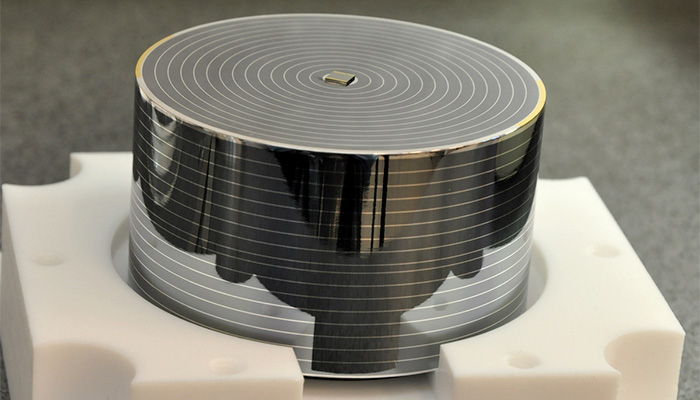
The EDELWEISS collaboration consists of scientists from four countries. The experimental setup is based on array of Germanium bolometers installed in the Frejus road tunnel in the underground laboratory (Laboratoire Souterrain de Modane, LSM), which shields the experiment by 1800m of rock (4850 m.w.e.). The bolometer detectors can detect WIMPs via their elastic scattering off Germanium nuclei and have an excellent background rejection power. In the research group at the Institute for Astroparticle Physics (IAP), the muon veto system was designed, built and operated. Besides the analysis of experimental data, we also provided a new electronic data read-out in cooperation with our partner institute IPE at KIT.
The IAP designed, built and operated the muon veto system. Besides the analysis of experimental data, we also provided a new electronic data read-out in cooperation with our partner institute IPE at KIT. The EDELWEISS-III experiment concentrated its search on so-called low mass WIMPs with masses in the GeV range which was completed in 2020.
